Tiz the season . . . for squash bugs to attack. They’ll torment any member of the squash family, especially winter squash, summer squash, and pumpkins. But they also go after cucumbers, cantaloupe (including other melons like honeydew), and watermelon. Like all true bugs (see our blog More Bugs That Suck) squash bugs have needle-like mouth parts. They stick their sharp little beaks directly into your plant’s veins and suck the life out of it.
The damage they do kills your plants!
An infestation of these bugs causes the leaves of your squash plant to turn yellow. The whole plant slowly turns brown and dies.
If you think you have squash bugs, look on the underside of the leaves for clusters of tiny, brown, football shaped eggs. These eggs can be anywhere on the plant (leaves, leaf stalks, stems) but they won’t be on the upper surface of the leaf where you can spot them easily. You have to turn the leaves over and look on the underside. Look all along the stalks and stems as well. When you find eggs, destroy them. Remove the leaf tissue with the eggs on it and crush the eggs. Or just smash them in place with your thumb.
When the eggs hatch, the baby squash bugs look a bit like aphids except that they move around fairly quickly and aphids don’t. Babies of true bugs are called nymphs. They look somewhat like the adult squash bugs except that they don’t have wings. Squash bugs, like grasshoppers, aphids, and stink bugs have incomplete metamorphosis from egg to nymph to adult. The baby insects in this group look like miniature adults in most cases. (On the other hand, insects that experience complete metamorphosis, like butterflies, bees, and flies grow from egg to larva to pupa to adult. A baby butterfly, a caterpillar, looks nothing at all like the winged adult.)
As squash bug nymphs grow they get bigger and easier to spot. They crawl all over your plant. Like all insects, the nymph has to molt (break out of its hard exterior shell, its skeleton) as it grows. You may find some left-behind shells stuck to your plants. Eventually, the nymphs reach their maximum size. Then they are ready to become adults.
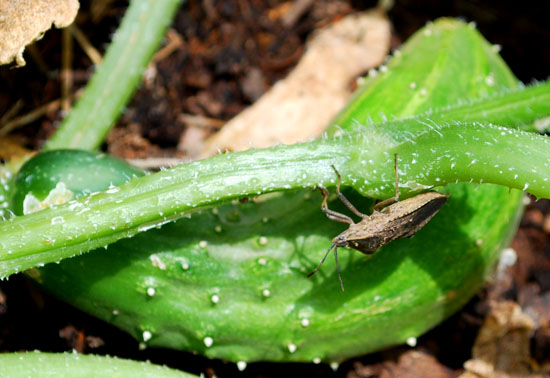 The winged adult squash bug flies swiftly. Moving fast, they can be difficult to catch. Sometimes you can catch them in the morning before the day gets hot. Insects become more active in heat, less active in cold. Carry a jar of soapy water with you and dump all the bad bugs you catch into the soapy water. They die quickly (which is very satisfying!). Because the adults are good fliers they fly into your garden from your neighbor’s garden.
The winged adult squash bug flies swiftly. Moving fast, they can be difficult to catch. Sometimes you can catch them in the morning before the day gets hot. Insects become more active in heat, less active in cold. Carry a jar of soapy water with you and dump all the bad bugs you catch into the soapy water. They die quickly (which is very satisfying!). Because the adults are good fliers they fly into your garden from your neighbor’s garden.
Starting your squash plant seedlings under row covers of light weight fabric that lets in sunlight, air, and water but keeps bugs out will protect them from the adult squash bugs and give them a good start in life. Eventually though you have to lift the covers to allow the bees to pollinate the flowers or you’ll have no fruit. You can hand pollinate the flowers yourself and keep the plants under cover if you wish. Even so, many squash plants get huge and are hard to contain under cover.
Go out into your garden every day, search for squash bug eggs, and crush them. Since the nymphs don’t have wings they can’t get away from you very fast so knock them into your soapy water or smash them with your hands. You can also squirt them with insecticidal soap but be careful because squash plants are sensitive to soap and you can damage your plants. If you make your own soap spray, be sure to use a genuine soap, not a detergent.
We recently visited two side-by-side gardens in Albuquerque, New Mexico. One garden, where the green peppers and other vegetables are thriving, is all organic. Every morning the organic gardener goes out to inspect her squash plants, and she finds and crushes all the squash bug eggs. There are no squash bugs on her plants and her plants are healthy.
The neighbor is not organic and uses any harsh chemical he can find. Most of these photos of problems came from the non-organic garden. Because the ecology of the non-organic garden has been completely disrupted by the indiscriminate use of broad-spectrum insecticides, the predators have been killed. As a result, the non-organic garden has many more problems than the organic garden.

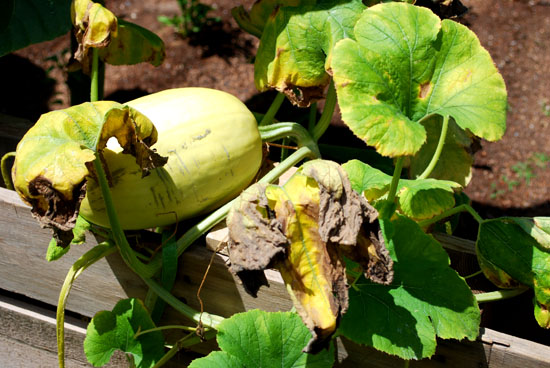
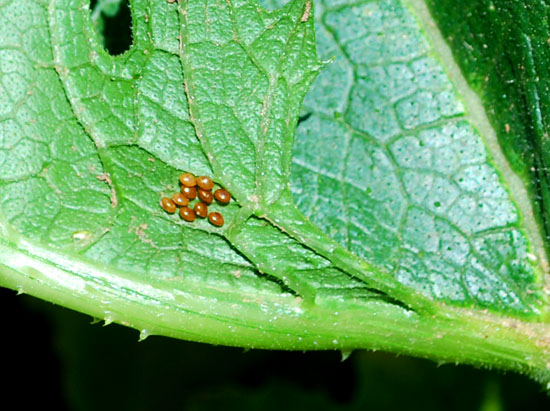


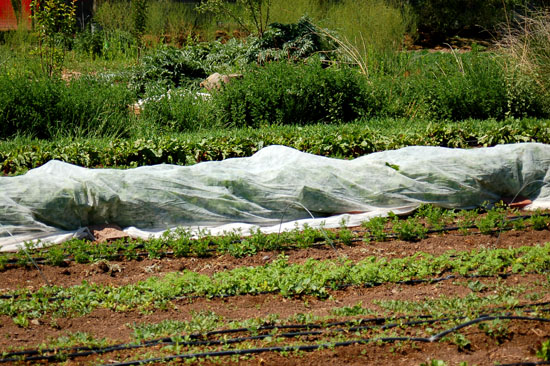

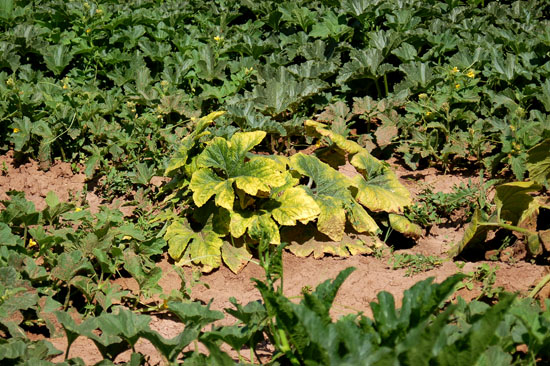
Leave a Reply